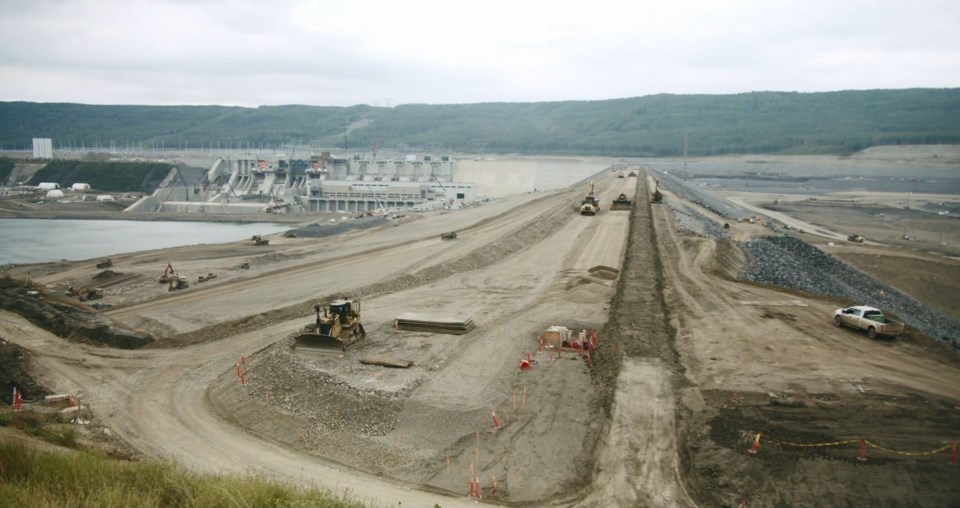Since 2019, four energy mega-projects spawned or hosted in northern British Columbia – Site C dam, the Trans Mountain pipeline expansion, LNG Canada and Coastal GasLink pipeline – have been under construction, boosting B.C.’s economy with thousands of construction jobs and billions spent on procurement and wages.
With a total capital spend estimated at $100 billion, these four projects alone provided up to 20,000 construction jobs in B.C. in 2022.
But all projects are now in the home stretch, and construction will soon begin winding down.
The Trans Mountain pipeline expansion (TMX) and Coastal GasLink pipeline (CGL) – are expected to be finished by the end of this year. LNG Canada and Site C have roughly another year to go.
The burning question across northern B.C. is ‘what comes next.’
With senior governments openly hostile to oil and gas development the resource future is cloudy.
“We’ve basically sent signals out of Ottawa and Victoria that we’re not really open for business when it comes to natural gas,” said Chris Gardner, president of the Independent Contractors and Business Association.
Gardner said there could have been other large LNG projects like LNG Canada sanctioned, had Canadian governments not discouraged them from being built.
Some look to a mining resurgent as an economic lifeline for the north, but the biggest new mines now underway, the Premier Gold Mine near Stewart ($178 million) and the Kemess underground copper-gold mine ($524 million) 250 kilometres north of Smithers, are a shadow of former resource project spending.
Veto fears
As B.C. is the only jurisdiction in North America to embrace the United Nations Declaration of Indigenous Rights, miners fear First Nations now have a veto over mine exploration and development.
On Nov. 1, the giant Red Chris mine was informed that a new agreement between the province and an Indigenous government will require the Tahltan First Nation’s consent before any significant changes at the major copper and gold mine are allowed.
Chad Norman Day, president of the Tahltan Central Government, confirmed the agreement means substantial changes to the Red Chris mine can only proceed with Tahltan environmental approval.
The Red Chris, owned by Imperial Metals, spans more than 230 square kilometres south of Dease Lake.
In August 2023, B.C. Indigenous leaders also called for a halt on any placer mining – often the first step in exploration – without their consent.
First Nations Summit Chiefs in Assembly called for an immediate moratorium on the issuance of new placer claims and leases in B.C., First Nations Summit political executive Robert Phillips said in statement.
Taranis Resources CEO John Gardiner, noting his company has been waiting more than 14 months for a work permit for a mine, after complaints from a local Indigenous group, voiced his frustration in October.
“The government has taken the position that First Nations are the rightful owners of the land,” Gardiner said, suggesting this contention point is generating significant anxiety within the mining community.
The belief that First Nations groups should have veto power over land use in B.C. has not been legally established but is affecting the climate of exploration operations in the entire province, Gardiner argues.
Joel McKay, CEO of Northern Development Initiative Trust, while saying that B.C. is showing “leadership” in Indigenous rights, also expressed concern for the future of the northern B.C. economy.
“We should be looking to northern B.C. to supply critical minerals, copper, softwood and hardwood products, be a key trade corridor for North America, provide energy in the form of natural gas and hydroelectric power. Create a hydrogen manufacturing hub in Prince George and support the continued development and evolution of our refinery and pulp mills in the region to produce renewable fuels,” he said.
“All this is at hand, but we have to be competitive.”
--With file from Nelson Bennett, Glacier Media



